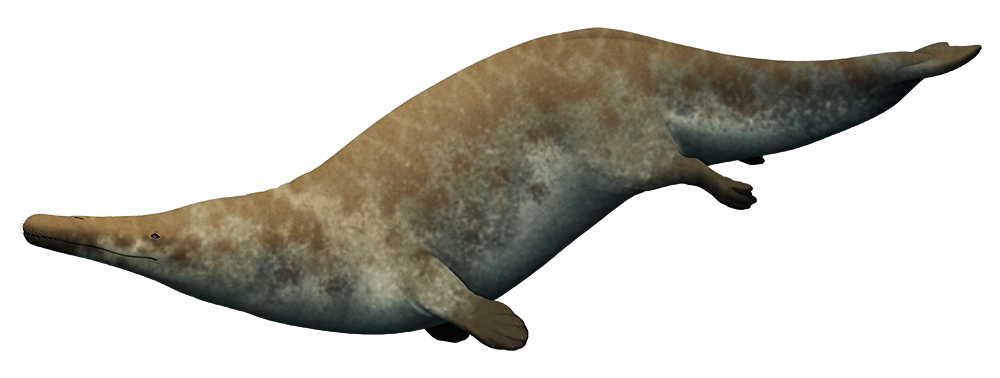The protocetids were some of the first oceanic cetaceans, occupying a transitional position in the evolution of whales, with four paddle-like limbs and nostrils only partway up their snouts.
Early members of this group swam like otters, using a combination of undulating their bodies and paddling with large hind limbs, but somewhere in the Late Eocene they switched over to propelling themselves entirely with their tails and gave rise to even more whale-like forms like the basilosaurids.
And Aegicetus gehennae was right in the middle of that switch.
Discovered in the Wadi Al-Hitan (“Valley of the Whales”) fossil site in Egypt, Aegicetus lived around 37-35 million years ago. It was similarly-sized to earlier protocetids like Georgiacetus, measuring about 3.5m long (11’6″), but its hind limbs were proportionally smaller. Its hips were also completely disconnected from its vertebrae, giving it much more flexibility to undulate its body and tail – and preventing it from supporting its weight on land, suggesting that it spent its entire life in the water.
It wasn’t a direct ancestor to more “advanced” cetaceans, since it lived alongside several species of basilosaurids. Instead it seems to represent a late-surviving example of what the earlier protocetid-basilosaurid transitional forms would have looked like.

